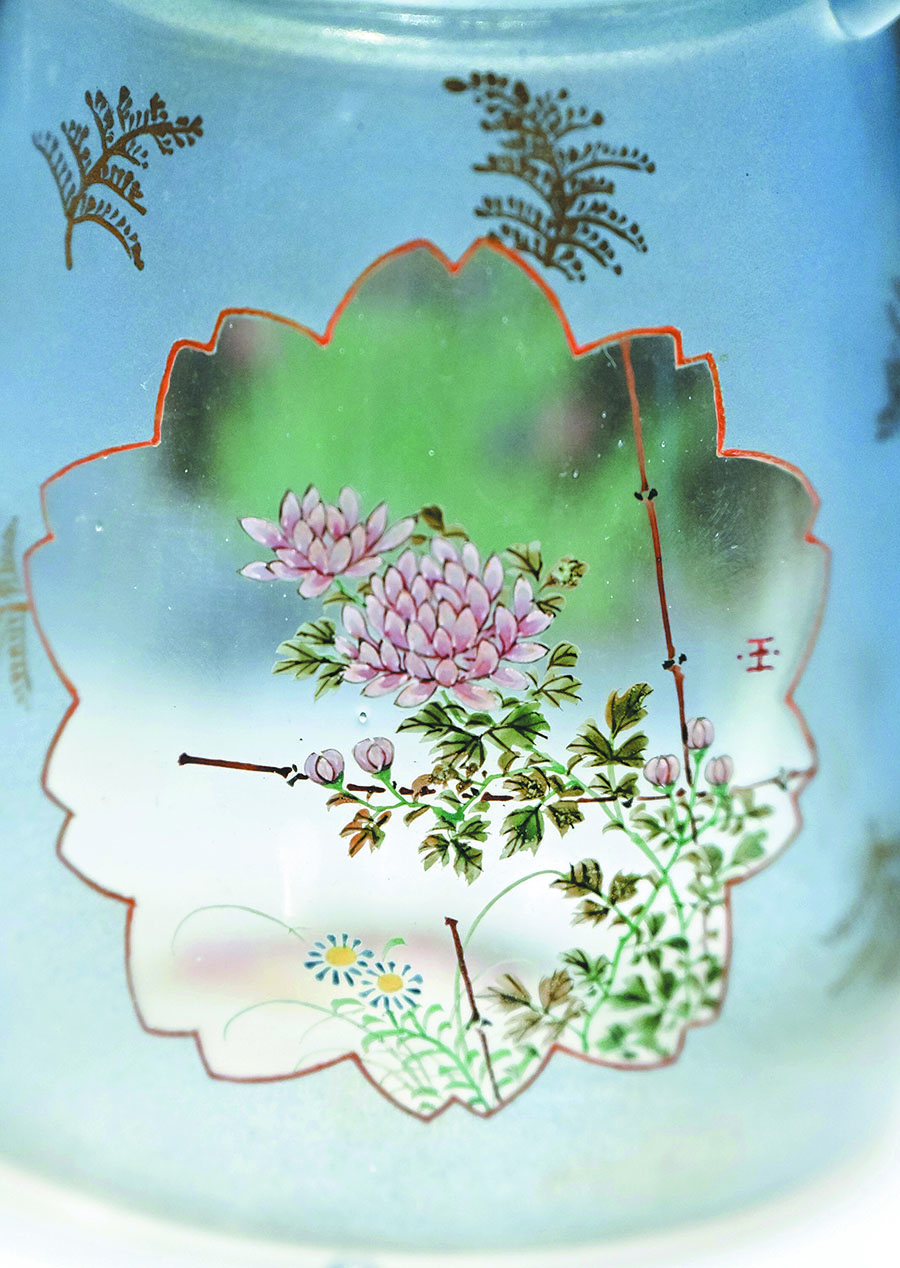

The history of glassmaking in China can be traced to the Western Zhou Dynasty (c. 11th century-771 BC). The establishment of glassworks in 1696, ordered by Kangxi himself, opened up a new chapter, in which the glass art was leveraged to its peak, technically and aesthetically.
The imperial workshops became a melting pot of the East and the West: New technologies were introduced by European missionaries, while home-grown artisans from long-standing glassmaking hubs, such as Boshan in Shandong province, were motivated to develop new combinations of color and motif.
The objects on show demonstrate well this exchange between two cultures. Products from the reigns of Kangxi, his son Yongzheng and grandson Qianlong — all avid patrons of art and crafts — present the same majestic beauty and imposing dignity as other artworks of the time; they were also the fruits of the cooperation between European and Chinese technicians to invent new styles.
One of the highlights at the exhibition, Zhang says, is a red and white brush-pen holder which employs the cased-glass technique. Such glass has two or more layers of different colors.
Zhang says the holder is actually half done, for the outer layer of glass, according to documents kept at the zaobanchu workshop, should be further carved with relief details, done in the same way as the traditional jade carving. Examples of the same kind of glass with the reliefs can be found in the collections of institutions such as the Museum of Fine Arts, Boston.